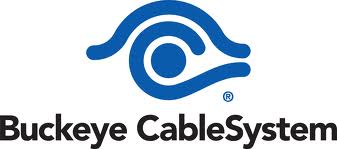Buckeye Cablevision Seeks FCC Waiver For Hybrid Set-Top Box

Buckeye Cablevision, which sells services under the Buckeye CableSystem brand, appears to be the first U.S. cable operator to seek a special waiver from the FCC that would pave the way for the MSO to deploy a new QAM/IP hybrid set-top box that uses both integrated security and a downloadable form.
Buckeye, an Ohio-based MSO with 130,000 video subscribers, argued in a waiver request filed Monday (March 3) that the proposed hybrid device made by Evolution Digital and outfitted with a downloadable DRM system developed by Azuki Systems (now part of Ericsson) would accelerate its all-IP migration plan and eliminate the need to execute a “flash cut” that would require a massive upfront investment.
The hybrid device, the MSO said, will serve as “the linchpin to Buckeye’s IP transition.”
The hybrid box Buckeye has in mind combines a unidirectional QAM-based digital transport adapter (DTA) with an IP video interface. The DTA side would rely on integrated encryption, while the IP portion would use a separate downloadable security system. Although the hybrid box processes QAM and IP inputs through separate circuits, it’s made to deliver a “unified presentation” via an HDMI or baseband analog connection.
Under the proposed downloadable system, IP video would be encrypted using a app in the hybrid box that communicates with the Digital Rights Management operating system housed at the Buckeye headend. When a customer selects a program, the app and the DRM OS determine if the box is authorized. If it is, then the DRM OS downloads a key to the box that, in turn, decrypts the program or channel.
Evolution showed off an IP-capable DTA at last month’s NCTC Winter Educational Conference in Tampa. At the time, Evolution president Brent Smith acknowledged that some of his company’s operator partners were seeking clarification from the FCC on whether hybrid DTAs would be covered by existing waivers.
Buckeye is looking for relief from the FCC integrated security ban that took effect in July 2007. To adhere to the mandate, most operators are separating the set-top security element through the use of the CableCARD. The FCC, however, has granted a blanket waiver that allows the deployment of DTAs with integrated security.
Multichannel Newsletter
The smarter way to stay on top of the multichannel video marketplace. Sign up below.
In Buckeye’s view, the IP, downloadable side of the equation is, in essence, separable security, meaning it would comply with the integration ban. The FCC has previously granted Charter Communications and Cablevision Systems special waivers that allowed them to deploy dual-security boxes that used both an integrated form of their legacy conditional access systems and a new downloadable form.
Weaning Off QAM Viewed As Critical To Future
Buckeye, which expects its plans to cost at least $35 million in capital investment over several years, said it’s vital for the operator to move to a more efficient all-IP network, claiming it will free up more bandwidth for broadband services and HD services, and put forth a downloadable security platform that can work with a broad range of IP-connected devices.
Buckeye said it needs to reclaim spectrum used for QAM services and apply it toward IP and broadband services in order to keep ahead of consumption trends.
The MSO said its network has seen Internet traffic surge more than 550% -- from 1390 terabytes to 7733 TB – in the past five years. To manage it, Buckeye has doubled the spectrum used for Internet traffic – from 24 MHz to 48 MHz, with “near term plans for another 50% increase.” It anticipates that Internet traffic on its network to nearly double every two years.
Buckeye upgraded to 860 MHz in 2004 and says its spectrum is now fully utilized. Of that total, at least 75% of its spectrum is eaten up by broadcast and switched digital video channels. “As more video services are transitioned to IP, Buckeye will be able retire the switched digital video solution and transition the majority of channels to IP streaming,” Buckeye said.
Its hope is to spur the migration by delivering traditional QAM video to the box while it starts of by delivering niche programming of VOD in IP format that utilizes the new downloadable security system. This approach, it argued, will also obviate the need to deploy a parallel IP network.
“Deploying Hybrid Boxes will obviate the costly, duplicative, and customer un friendly deployment of a parallel IP video network and the provisioning of separate IP set-tops,” the operator said.
As a condition of receiving the waiver, Buckeye said it would commit to making at least 85% of its video services available in IP within 36 months of receiving the waiver.
In likely anticipation of static from TiVo, which has previously been critical of what it views to be proprietary downloadable systems from Cablevision and Charter, Buckeye said it would provide ongoing support to customers who rely on CableCARD devices, including TiVo DVRs.
Buckeye’s primary competitors are AT&T U-verse, Dish Network, DirecTV, with some overlap with Time Warner Cable.
